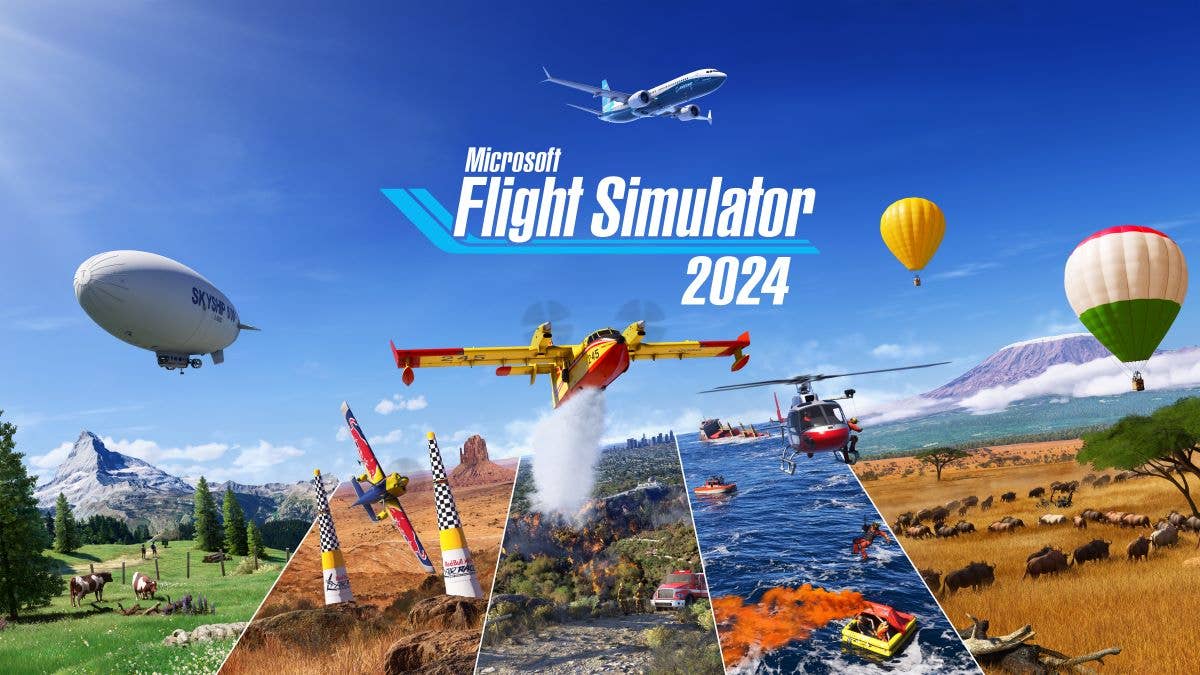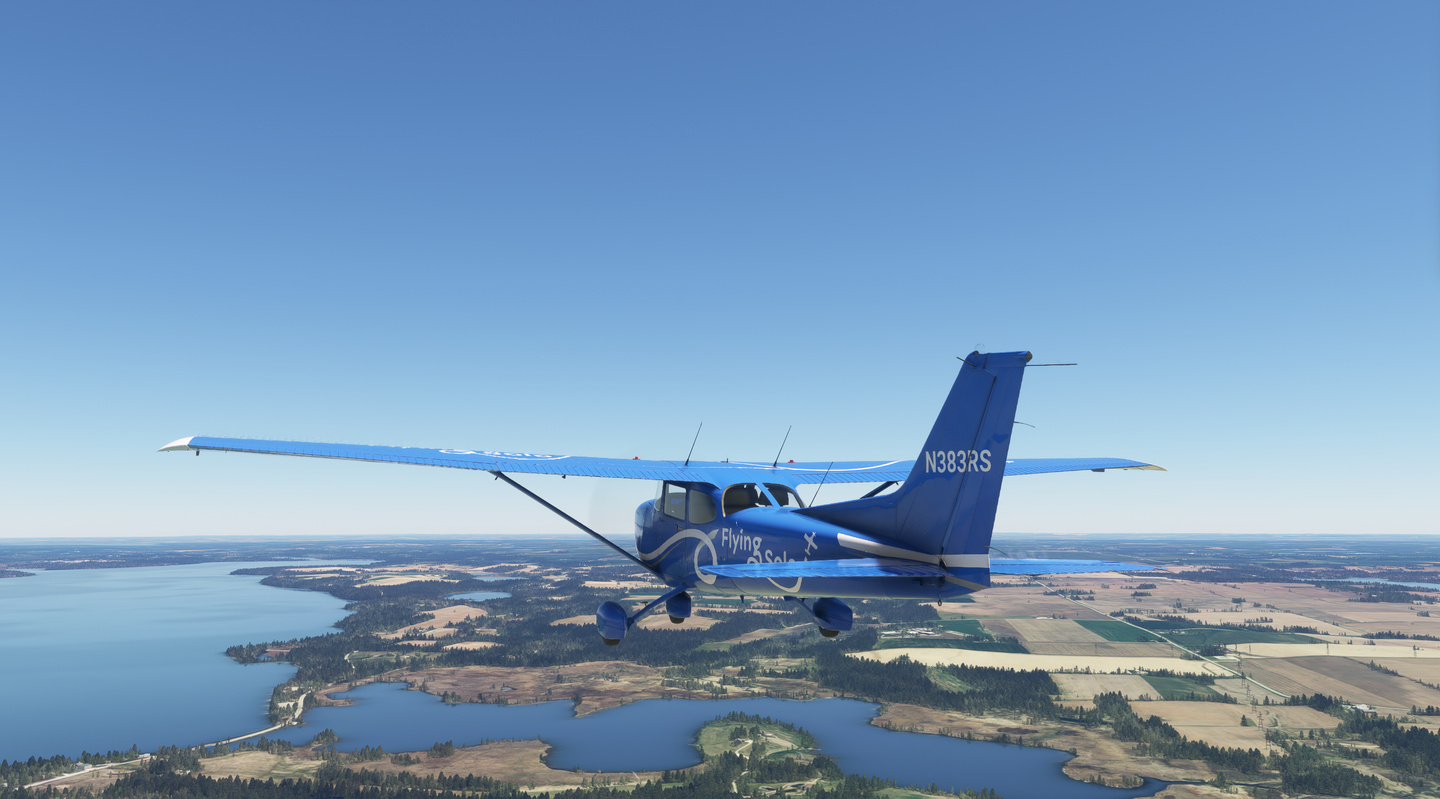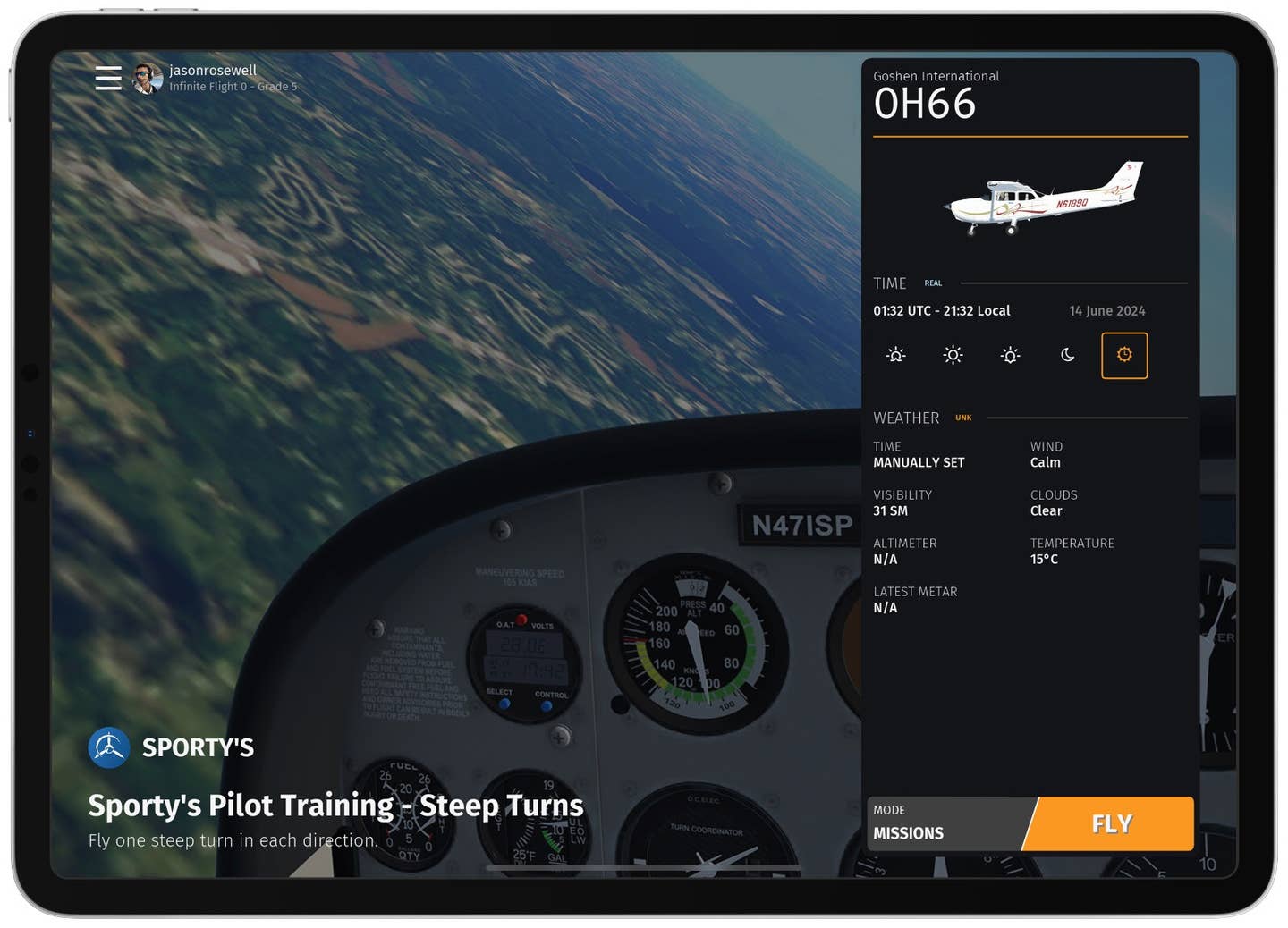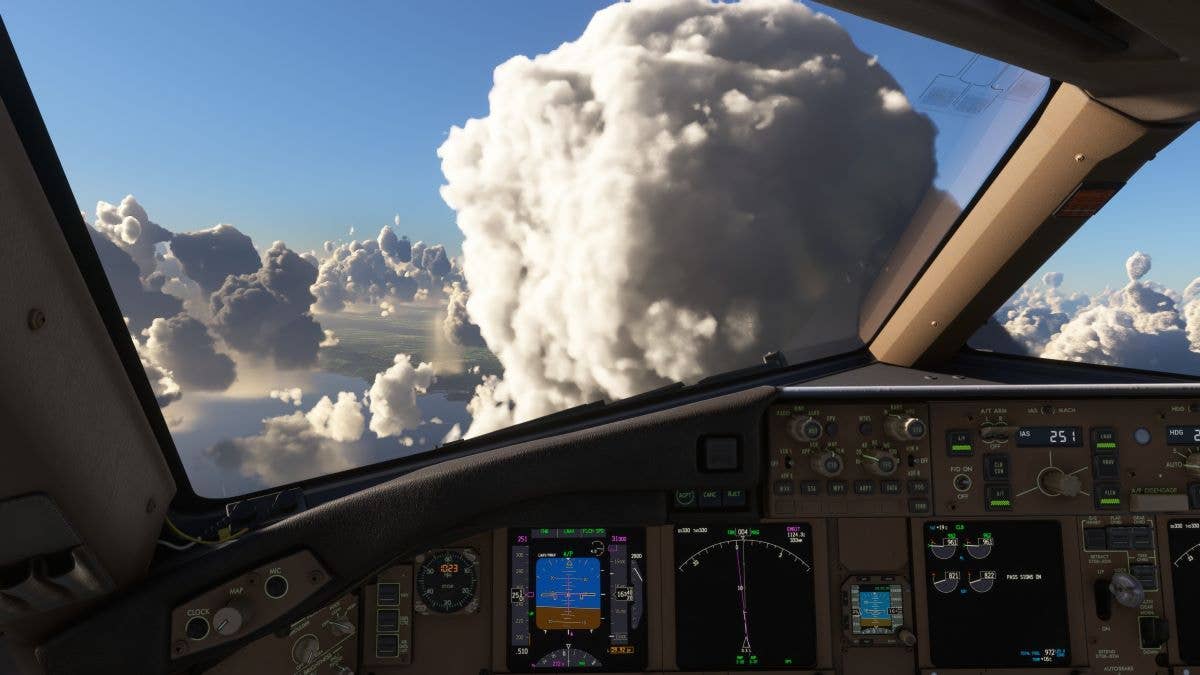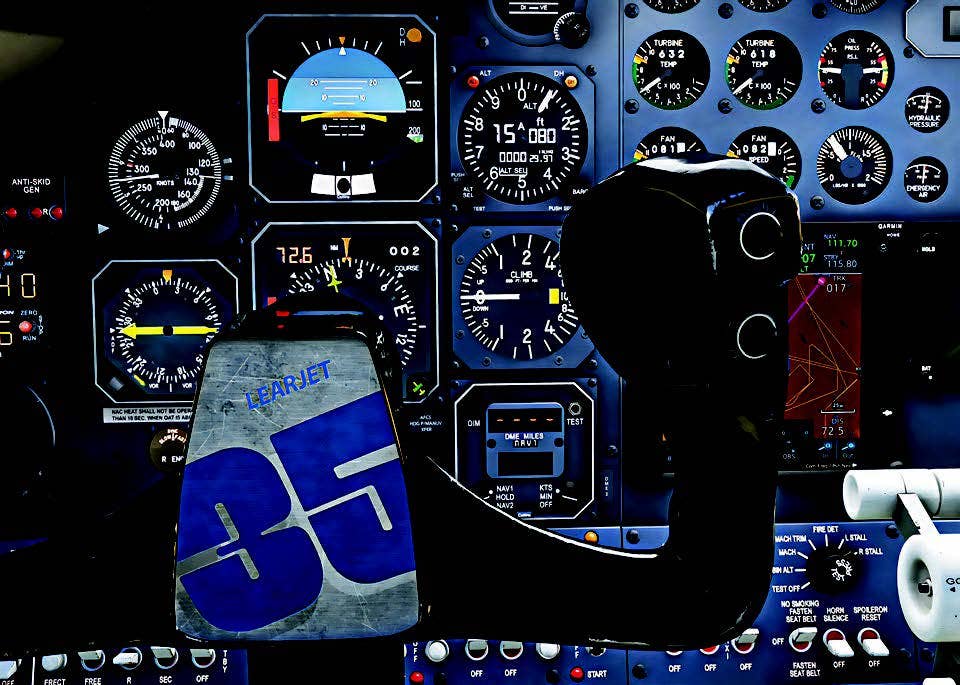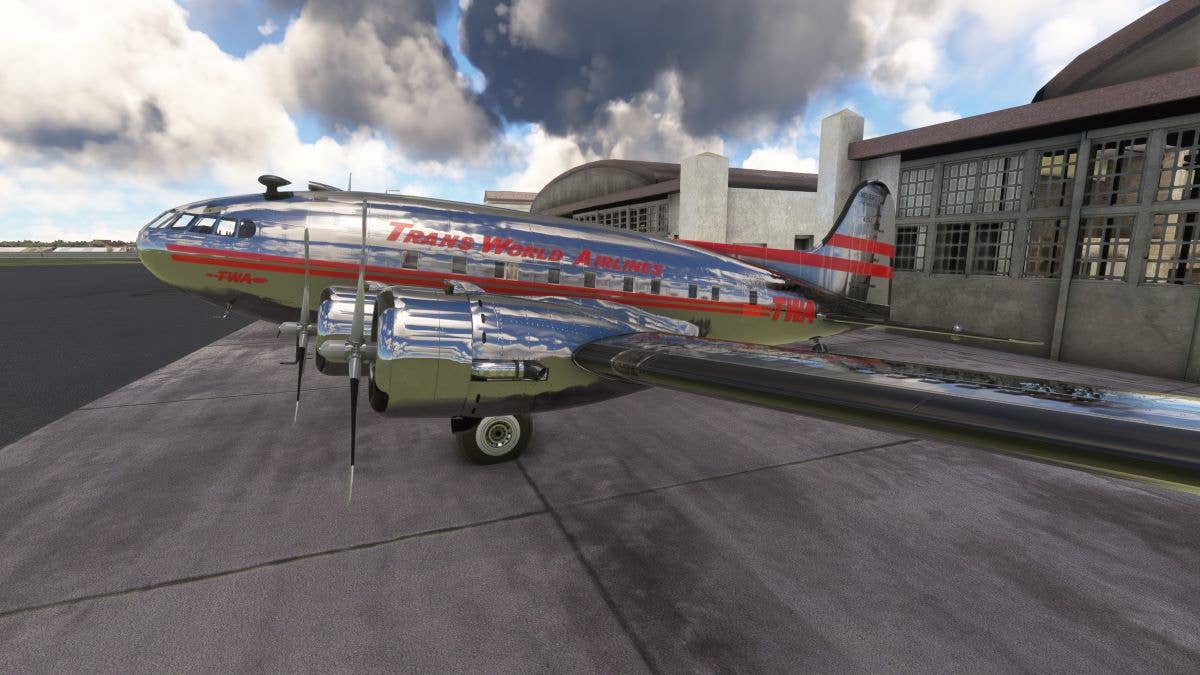Simulated Austria Is Wild, Wonderful
Innsbruck Airport in ‘X-Plane 12’ with the terrain can be treacherous—and nauseating.
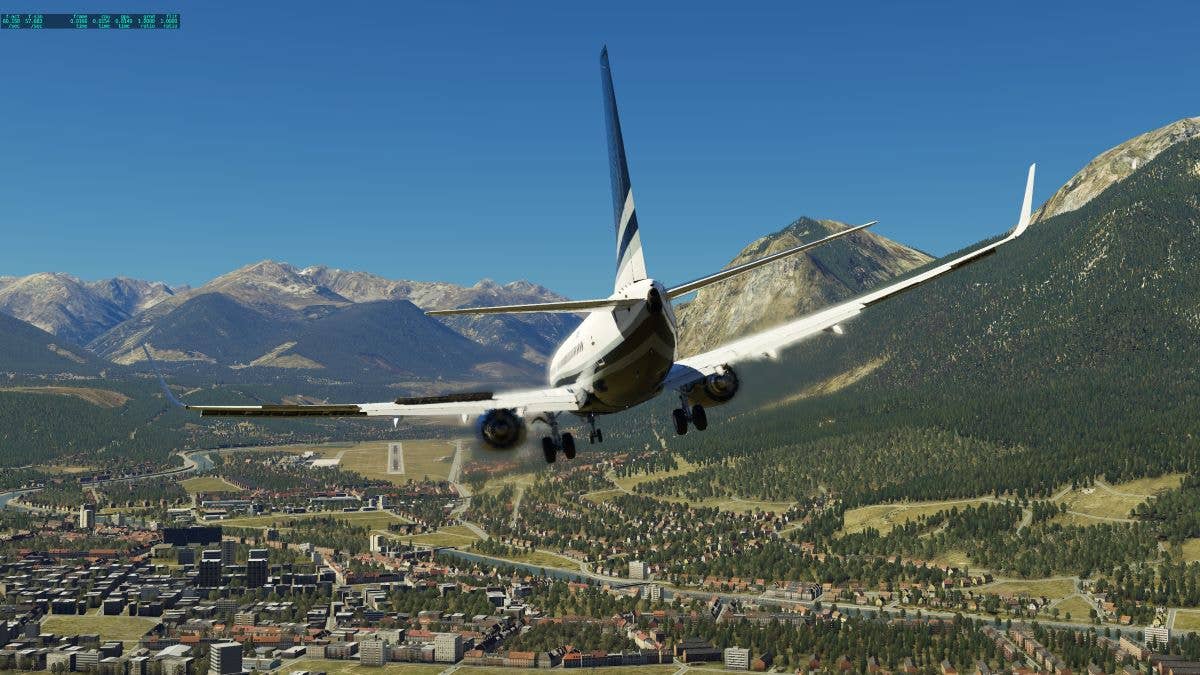
[Image courtesy of Peter James]
Lately I am caught up in a self-induced battle between the realism of X-Plane 12 and Microsoft Flight Simulator 2020 (MSFS 2020). No better place to showcase this than in and out of one of the most famous airports in all of the sim kingdom, Innsbruck, Austria (LOWI).
Innsbruck is one of the most beautiful and spectacular places on earth with an airport that can support a variety of airline equipment up to a small widebody such as the Boeing 767-300ER. I have traveled to LOWI for my entire “sim life" but sadly haven’t been able to see it in person yet.
To demonstrate this magnificent place, I chose horrendously gusty winds by manually editing the weather in both X-Plane 12 (XP12) and MSFS2020. I wanted to test terrain-induced dangers with modeled shear, downsloping, thermals, and maybe some rotor effects.
The results were good and depicted simulated wind over steep peaks equally well. Both sims have enhanced their ability to handle wind flow over terrain and objects, such as buildings. Each will delight and tantalize you into taking risks you would not in real life. However, if you find yourself in a real-world situation that demands all your wind-battling skills, I am confident some, if not most of which you experience in either sim, will translate to useful skills.
I started this exercise using the closest thing to a large bizjet I could find, which in MSFS 2020 is the Aerosoft CRJ 550 series with corporate livery. I enjoy this model and use it often, as I have seen these converted to private use in the real world.
I began and ended all my flights at LOWI to test terrain, feel out the winds aloft, as well as terrain-based wind flows and shear.
The CRJ is interesting to fly with a lot of trimming required as it’s a long-bodied jet with a large swing either side of the CG. I have not flown one in real life, but I find flying pitch with stab trim almost entirely while hand flying. I mean, all jets I have flown are like that, but this is fairly sensitive to pitch, power, and flap configuration—all requiring lots of trimming. Taking off in violent winds was a task. The small aileron “tabs” were not doing a great job in crosswind ability.
Using live weather in my first view patterns was wild enough. On the downwind to the westerly runway at LOWI, I experienced a lot of up and down drafts, shear, varying winds, and sloppy controls. Even some unstable virga bursts were in the valley, corresponding to the actual METAR at the time.
Snow cover is supposed to be realistically placed, and if it was, the coverage seemed quite believable. Snow still was deep in most elevated regions and spotty in the valley floor by the airport. Also visible was green grass and flowering trees.
For the final approach, I calculated VREF of about 128 was fought with much shear, with airspeed variances of up to 20 to 30 knots, providing a wild ride. In the CRJ you can not hear any engines from the cockpit, making for an odd audio sensation. You must look at your power settings only. This makes it easy to get behind the “power curve,” and often I found myself overcorrecting or undercorrecting on speed control.
I imagine this is how a real CRJ pilot must feel. To me, engine sounds are extremely useful and one of the senses you can not operate without. I imagine MD80-style pilots are used to the same sensation.
I love comparing sims, so I loaded up manual weather in XP12 to mimic the same windy conditions, as live weather in the sim works well.
I wanted unlimited visibility and no rain. Live weather in XP12 has a defect where it rains all the time, regardless of actual METAR. With a lighter corporate jet, that is powerful. As is often the case with swept-wing jets, sometimes extra drag is required beyond gear and flaps. In this case, I ran the speedbrakes often on final, as gusting winds often increase speed and put you high on the glideslope.
It definitely was a jarring trip and was often violent with bank angles going beyond 40 degrees. Landing was wild, leading to the aircraft's big wings striking the ground at times in the crosswinds approaching 35 knots. Its powerful reversers worked great, and slowing down was not an issue. The same monster engines worked great on climbout also, blasting through the shear layers.
Lastly, I tried the heaviest aircraft I could use at LOWI that I had in my library: the 737-700 BBJ models from PMDG and LevelUP for XP12.
Using 130,000 pounds as my test weight, I kept the same weather parameters going, with equally set manual weather in both sims, featuring the same winds. Hand flying the circuit, I blasted through the shear with ease, but the big wings made it even more noticeable in rolling motions and aileron slop.
I have noticed when flying big jets in my sims, the longer wings and winglets of newer airliners tend to “right the jet” quickly as it creates a stable platform in roll. However, it often results in necessary “tugging” or more force to start or end a bank. Older jets without winglets or shorter wingspans are much faster in roll and lack some stability in bank.
- READ MORE: A Better Virtual Flight Deck
I only have my real-world corporate jet experience to draw upon, but I do believe this is true. I have flown “wingleted” Challenger 300s and non-wingleted Falcon 2000s, Hawkers, and Beechjets. Of those, I found the Challenger 300 has a more stable roll and is more sluggish as well in that axis. When I flew Beechjets, with short stubby wings and no winglets, I realized it would simply roll off into oblivion if pushed more than 30 degrees over. There was no inherent stability.
Some circuits were done taking off downwind. I could actually feel the requirement to push forward on the yoke, keep the stab down, and “dive away from the wind." That technique works here as well. By neutralizing the yoke, I lost the ability to steer and attack whatever crosswind component was evident. Pushing too far down made steering overly sensitive, but pulling toward takeoff made steering impossible. It was a battle and balance that is realistically conveyed in both sims.
Initiating the PMDG 737-700 BBJ was equally satisfying in XP12, with more fantastic weather modeling. The “violence” was real, and two landing attempts were met with sudden go-arounds as crosswinds, sudden sink rates, and warnings were severe.
After a 50-degree sudden roll over at 500 feet, I was done and practiced wild go-arounds. This was in XP12. In both sims, if your sound settings are accurate, you can really hear the gusts on the windscreen on final as power is relatively low. This is something that is present in the real jet I fly.
Once again, I must tout the amazing XP-Realistic Pro, available at www.x-plane.org, for XP12, or the FS-Realistic Pro for MSFS2020. Both enhance and add necessary sound and visual effects for each sim.
Unexpected rolling motion hit me in XP12—and I loved it. Downwind washing wind flow is the reason I suspect, but I can imagine how nauseating this would be in real life. As a captain of jets for many years, I am OK while up front, but as soon as you make me a passenger, all bets are off for my stomach.
Even in the default XP12 scenery you do get the feeling of new worldly locations, with the local-style architecture and buildings changing. The European look is quite evident in Austria, creating an immersive experience, although not quite as dramatic as in MSFS2020.
Doing multiple takeoffs and landings to and from such a beautiful place is fun and satisfying to watch on the replay mode of XP12. I hope Asobo Studio will include replay into future versions of MSFS2020. You can learn a lot from sims, and being able to watch every aspect of it over and over during challenging situations is a great tool.

Subscribe to Our Newsletter
Get the latest FLYING stories delivered directly to your inbox

